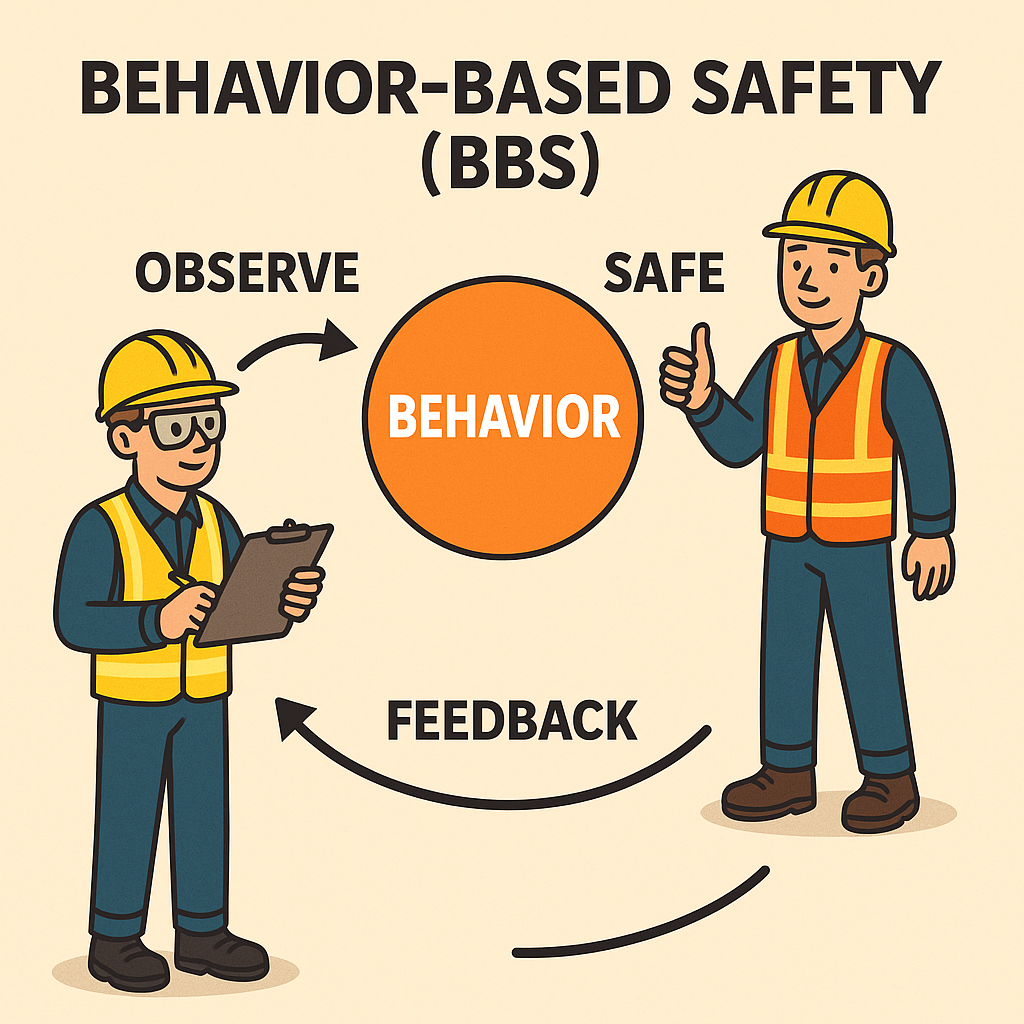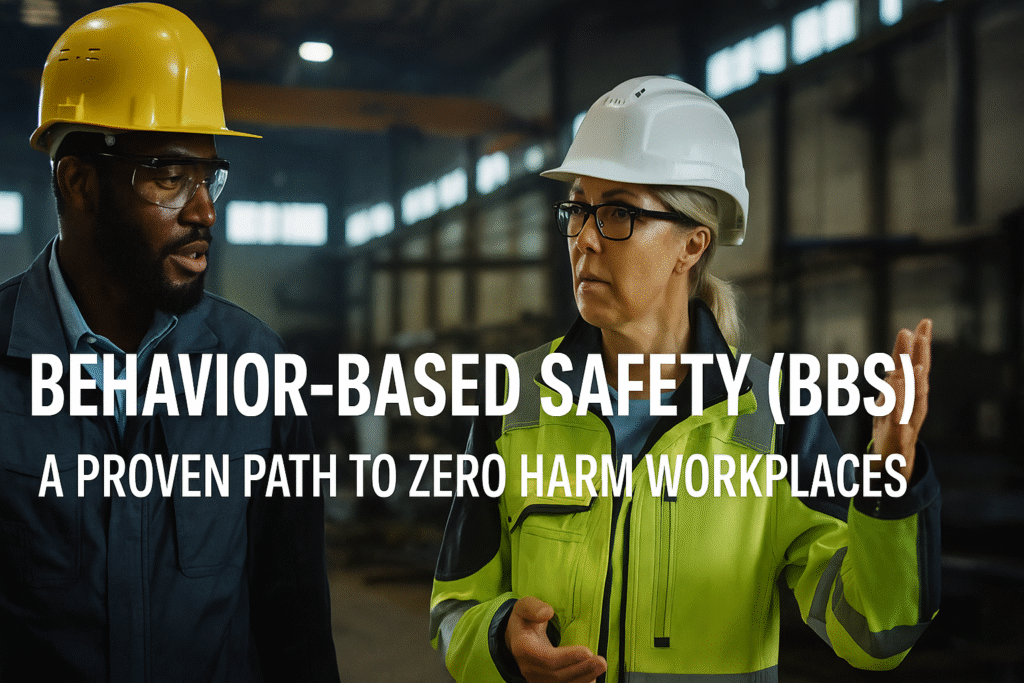Behavior-Based Safety (BBS) is a proactive approach to workplace safety that focuses on identifying and reinforcing safe behaviors while discouraging unsafe actions.
It goes beyond rules and compliance to target the human element of safety—what people do, why they do it, and how it can be improved.

When implemented effectively, BBS helps reduce injuries, foster positive safety culture, and empower workers at all levels to take ownership of their safety and the safety of others. It’s a system that builds safety from the inside out.
- What Is Behavior-Based Safety (BBS)?
- Core Components of a Successful BBS Program
- Why Behavior-Based Safety (BBS) Matters
- Example of Behavior-Based Observation Checklist
- Steps to Implement a Behavior-Based Safety Program
- Challenges in BBS Implementation—and How to Overcome Them
- BBS vs Traditional Safety Programs
- Digital Tools to Enhance BBS Programs
- Related Internal Resources
- Conclusion: Behavior-Based Safety (BBS) Drives Real Change
What Is Behavior-Based Safety (BBS)?
Behavior-Based Safety is a systematic approach that:
- Observes employee behavior in the workplace
- Identifies both safe and unsafe actions
- Provides constructive feedback in real-time
- Reinforces positive behaviors
- Tracks patterns to improve overall safety systems

The method is based on behavioral psychology and rooted in the understanding that most incidents are caused by human behavior, not faulty equipment or unsafe conditions alone.
Core Components of a Successful BBS Program
1. Observation
Workers or trained observers watch how tasks are performed, noting both safe and at-risk behaviors.
2. Feedback
Immediate, non-punitive feedback is given—positive reinforcement for safe actions and coaching for unsafe behaviors.
3. Data Collection
Observations are documented to identify trends, recurring unsafe behaviors, and areas needing training or redesign.
4. Employee Involvement
BBS works best when employees are engaged in the process, not just management. Peer-to-peer observation is common.
5. Continuous Improvement
Behavioral data is used to make improvements to processes, policies, training, and safety culture.
Why Behavior-Based Safety (BBS) Matters

BBS offers advantages that traditional safety programs often miss:
- Empowers employees to be safety champions
- Encourages positive reinforcement rather than punishment
- Improves safety culture by normalizing discussions about safety
- Reduces incident rates by identifying trends before accidents occur
- Supports continuous learning by involving all levels of staff
📊 According to a NIOSH study, organizations that implement BBS see up to a 30%–70% reduction in incident rates within 12 months.
Example of Behavior-Based Observation Checklist
| Behavior | Safe | At Risk | Comments |
|---|---|---|---|
| Using proper PPE | ✅ | ❌ | Hard hat missing |
| Lifting with proper technique | ✅ | ❌ | Twisting while lifting load |
| Housekeeping in work area | ✅ | ❌ | Cluttered around exit |
| Using tools correctly | ✅ | ❌ | Hammer used instead of wrench |
Steps to Implement a Behavior-Based Safety Program
1. Get Leadership Support
Secure management buy-in and align BBS with company values.
2. Train Observers
Train selected workers to conduct observations and provide feedback effectively.
3. Conduct Observations Regularly
Aim for consistency. Use mobile apps like iAuditor or Salus Pro for real-time data entry.
4. Act on the Data
Share observation data in safety meetings. Use trends to guide training and corrective actions.
5. Recognize Safe Behavior
Celebrate positive safety practices publicly to reinforce behaviors.
Challenges in BBS Implementation—and How to Overcome Them
| Challenge | Solution |
|---|---|
| Resistance to being observed | Emphasize coaching, not punishment |
| Lack of follow-up | Create regular review cycles for BBS data |
| Inconsistent observations | Standardize observation forms and train well |
| Low engagement | Involve employees in creating BBS tools |
BBS vs Traditional Safety Programs
| Traditional Safety | Behavior-Based Safety (BBS) |
|---|---|
| Focus on compliance and rules | Focus on behavior and choices |
| Reactive—responds to incidents | Proactive—prevents incidents |
| Often top-down enforcement | Involves all levels, especially workers |
| Limited reinforcement | Positive feedback is frequent |
Digital Tools to Enhance BBS Programs
These platforms allow observation form creation, trend analysis, and streamlined reporting.
Related Internal Resources
- Top 10 Daily Habits That Make Workplaces Safer
- Job Hazard Analysis (JHA): The Smartest Step Before Any Job
- Safety Committees: Structure and Benefits
Conclusion: Behavior-Based Safety (BBS) Drives Real Change
Behavior-Based Safety (BBS) is more than a program—it’s a culture shift. By targeting the behaviors that lead to incidents and encouraging open communication, organizations can build a truly safe and accountable workforce.

When workers watch out for each other, the whole workplace becomes stronger—and safer.

No comments yet